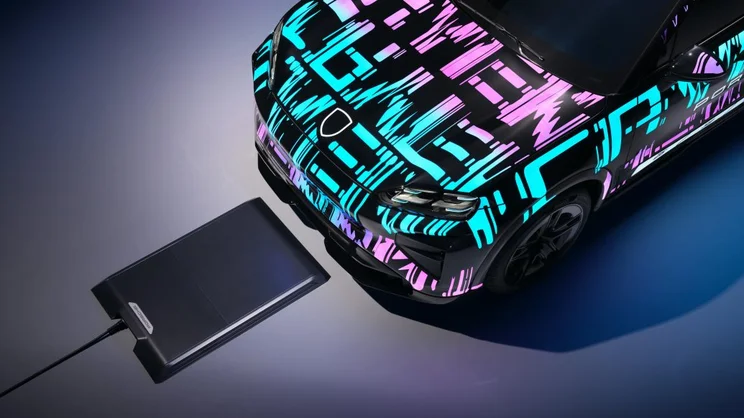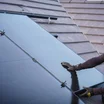- The company will be the first manufacturer to bring an 11kW charging system with a one-box base plate
- The all-electric generation of the Cayenne will be the first model series that can be ordered with the vehicle-side equipment
- It’s expected to launch in Europe in 2026

Electric vehicle (EV) and world-renowned premium car manufacturer, Porsche has unveiled a new wireless car charger at the IAA Mobility event in Munich.
The company will be the first manufacturer to bring an 11kW charging system with a one-box base plate for battery-EVs to market maturity.
A one-box base plate means that apart from the floor plate mounted at the car park, there’s no longer a need to install a wallbox or control unit.
The all-electric generation of the Cayenne will be the first model series that can be ordered with the vehicle-side equipment, with sales of the floor plate starting at Porsche Centres and online.

Get free solar panel quotes
Answer a few quick questions, and our trusted installers will send you bespoke solar panel quotes – for free.
Dr Micheal Steiner, deputy chairman and member of the executive board, research and development, Porsche said that ease of use, suitability for everyday use and charging infrastructure are still the decisive factors when it comes to EVs.
He added that inductive charging will soon be available in series production at Porsche, and that charging an EV at home has never been so easy and convenient.
With a maximum charging capacity of up to 11kW, the sports car manufacturer has even reached the level of wired AC charging with its contactless charging system. The efficiency of energy transfer from the power grid to the battery is up to 90%.
If you’d like to know more about government grants for EV charging points, read our dedicated article.
“Around 75% of all charging processes in an all-electric Porsche take place at home, which was the result of an analysis we ran,” Steiner said. “The potential of inductive charging is correspondingly great.”
The Porsche Wireless Charging floor plate measures 117cm (l) x 78cm (w) x 6cm (h) and can be installed in a garage, carport or open-air parking space and connected to the mains. Customers will also receive support by the Porsche Installation Service and, if ordered, an electrician will install the inductive floor plate and put it into operation.
In order to be able to charge contactlessly, hardware is also required on the car.
The new Cayenne Electric can be ordered with optional Porsche Wireless Charging pre-installation and Porsche Wireless vehicle plate. The model will be protected from stone chips and the effects of the weather, with the receiver unit located in the underbody of the vehicle between the front wheels.
The floor plate is suitable for outdoor use, weighs around 50kg and is equipped with an LTE and WLAN module as standard, so that remote software updates and infrastructure support can be guaranteed in the future.
For the wireless charging to begin, the drive will simply need to park above the floor plate, with the contactless transfer between the two charging units taking place over a distance of a few centimetres.
From here, the Cayenne will lower automatically and the base plate has a motion detector and foreign object detection.
Steiner said that the charging process will be automatically interrupted if a living creature gets between the vehicle and the floor plate, or if a metallic object lies on the latter and heats up.
The technology is integrated into the My Porsche app so drivers can track charging status and more than one vehicle can be authenticated.
Porsche Wireless Charging will initially launch in Europe in 2026, with other markets worldwide set to follow.







